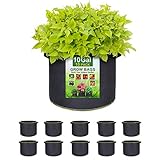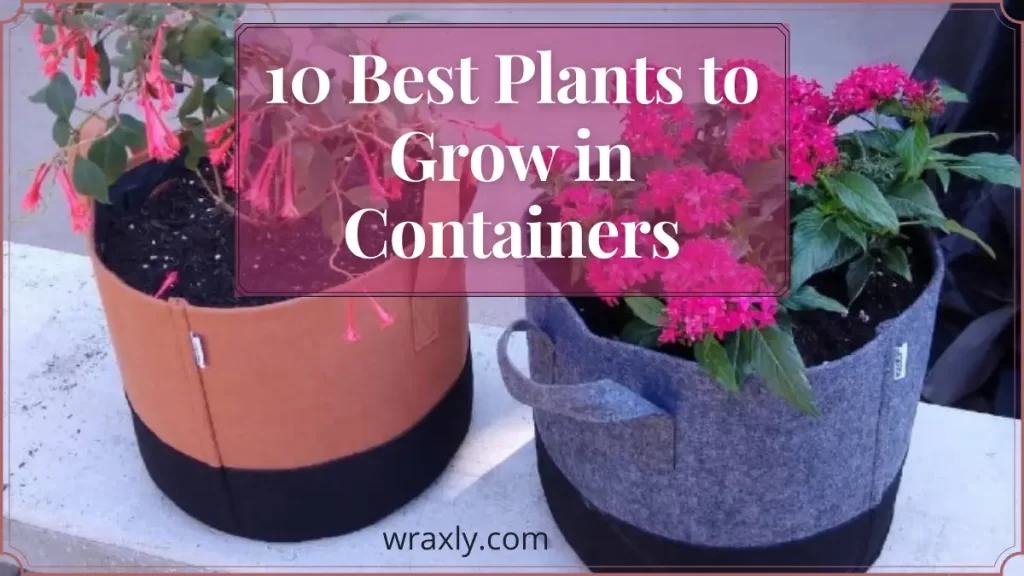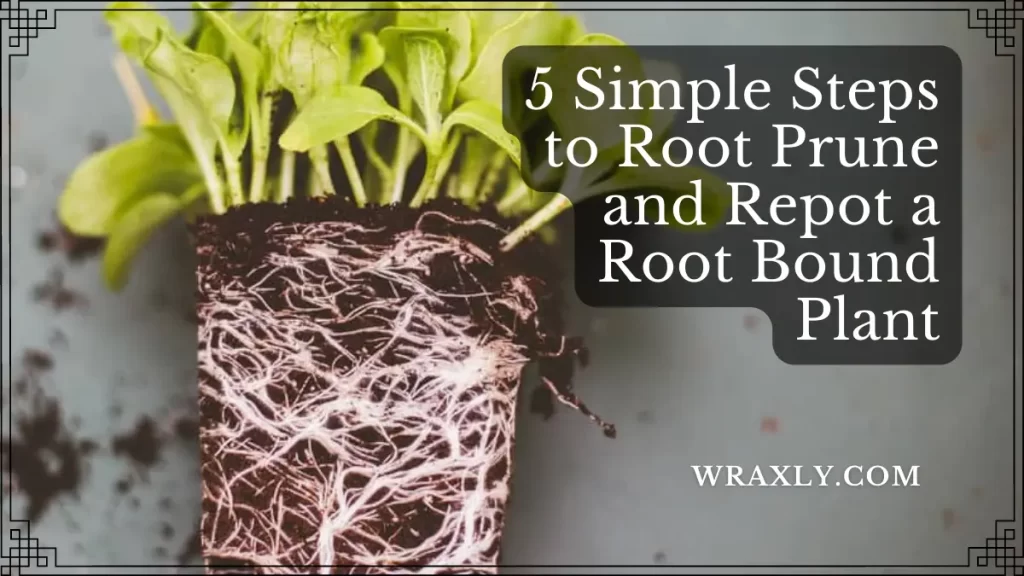Roses can be a beautiful addition to any garden, but did you know that they can also be grown in pots? If you have limited space or just want to enjoy roses in a different location, pot-grown roses are the way to go. Here are four quick tips on how to grow roses in pots.
![4 Quick Tips on How to Grow Roses in Pots [Gardening 101]](https://wraxly.com/wp-content/uploads/2022/05/4-Quick-Tips-on-How-to-Grow-Roses-in-Pots-Gardening-101.webp)
Do Roses Do Well in Pots?
Roses are well-known for their beautiful blooms and delicate fragrance, making them a popular choice for gardeners of all skill levels. Many people think that roses only thrive in conditions conducive to full sun and rich soil, but this isn’t always the case. In fact, roses can be grown quite successfully in pots as long as they are provided with the right combination of nutrients and moisture. Just like any other plant, a rose will need to be fed and watered regularly, but as long as these basic needs are met, it can thrive even if it is planted in a small container rather than in an expansive garden. So if you’re looking for a beautiful specimen plant that doesn’t take up too much space, then consider growing some roses in pots! They’re surprisingly sturdy and won’t disappoint you once they start to bloom.
1) Review the Basic Care Requirements for Roses
Whether you choose to grow a rose in a container or in the ground, you need to know how to care for one. Each type of rose may have unique growing needs. However, there is a general list of care preferences that nearly all roses share:
- Sunlight: Roses grow best in a full sun setting. While some roses can survive in partial shade, six hours of sun or more consistently proves to produce better blooms and stronger growth.
- Soil conditions: The ideal garden soil for a rose growing in a container is acidic, well-draining, and rich in organic matter. Mixing potting mix with another nutrient-rich material like compost is one way to create an excellent soil environment for your rose.
- Watering: Give your rose water about once per day or once every other day. Check the soil in your container regularly to ensure it is not too dry while also draining efficiently.
- Fertilization: Roses are heavy feeders that grow best when they receive multiple feedings throughout the growing season. These plants need all three main nutrients, but phosphorus is often the most important as it can promote improved blooming characteristics.
- Pruning: Most rose varieties will appreciate a pruning job in early spring that removes weak, dead, and diseased branches. It also helps to remove spent flowers later in the season. Pruning is also an excellent way to maintain good air circulation through the foliage, which lessens the risk of powdery mildew, fungal diseases, and other moisture-related problems.
There can be a lot of work that goes into caring for a rose that goes well beyond the list above. However, the brief items we mentioned give you a reliable overview of a rose’s main maintenance requirements.
Recommended Fertilizers for Roses
| Image | Title | Prime | Buy |
|---|---|---|---|
Top | Down to Earth Organic Rose & Flower Fertilizer Mix 4-8-4, 5 lb | PrimeEligible | Check Price on Amazon |
 | Miracle-Gro Water Soluble Rose Plant Food, 1.5 lb | PrimeEligible | Check Price on Amazon |
 | Jobe’s, 04102, Fertilizer Spikes, Rose, 10 Spikes, Brown | PrimeEligible | Check Price on Amazon |
 | BioAdvanced 701210A 2-in-1 Rose & Flower Care 6-9-6, 10 lb. | PrimeEligible | Check Price on Amazon |
 | Scotts Super Bloom Water Soluble Plant Food, 2 lb - NPK 12-55-6 - Fertilizer for Outdoor Flowers, Fruiting Plants, Containers and Bed Areas - Feeds Plants Instantly | PrimeEligible | Check Price on Amazon |
 | Flower Fuel 1-34-32, 250g - The Best Bloom Booster for Bigger, Heavier Harvests (250g) | PrimeEligible | Check Price on Amazon |
2) Choose a Type of Rose that Grows Well in Pots
Roses come in many forms, some of which are better suited to growing in the ground, while others are ideal for growing in containers. Generally, roses that grow with a larger or more sprawling habit are not the best roses for containers. By contrast, container roses like the ones below tend to be more compact, allowing them to fit well in most pots:
- Miniature roses, Rosa, spp.
- August seebauer rose, Rosa ‘August Seebauer’
- Summer fashion rose, Rosa ‘Summer Fashion’
- Lady marmalade rose, Rosa ‘Lady Marmalade’
- Pomponella rose, Rosa ‘Pomponella’
- Flower carpet scarlet rose, Rosa ‘Flower Carpet Scarlet’
- Firecracker rose, Rosa ‘Firecracker’
You are sure to find many other roses that can thrive in a pot. But if you are lost for ideas on which variety to use, refer to the roses we listed above for some inspiration.

3) Find the Perfect Container for Your Roses
The container you select for your rose is incredibly important and must have a few distinct qualities. First, your container must allow for good drainage. Pots with large drainage holes or fabric grow bags, which have permeable materials, are two options that will give your soil a chance to drain efficiently.
Select a large container, as larger pots are more likely to have enough room to accommodate the root system of your rose than smaller pots. Choosing a container that is too small will cause the plant to run out of growing room and become rootbound.
Recommended Rose Containers
| Image | Title | Prime | Buy |
|---|---|---|---|
 Top
Top
Top
Top
Top
Top
Top
Top | Gardzen 10-Pack 5 Gallon Grow Bags, Aeration Fabric Pots with Handles | PrimeEligible | Check Price on Amazon |
Top | Wraxly Fabric Grow Bags - 7 Gallon Colorful Two-Tone Planter Pots. Best Gardening Gift for Plant Lovers! [5-Pack of Assorted Colors - Plus Black Bonus Bag!] | PrimeEligible | Check My Price on Amazon |
 Top
Top
Top
Top
Top
Top
Top
Top | VIVOSUN 10-Pack 15 Gallon Grow Bag, Reinforced Planter Fabric Pot for Gardening | PrimeEligible | Check Price on Amazon |
 Top
Top
Top
Top
Top
Top
Top
Top | SunArea 10-Pack 10 Gallon Grow Bags, Thickened Nonwoven Aeration Fabric Pots with Reinforced Handles, Heavy Duty Plant Grow Bag for Gardening | PrimeEligible | Check Price on Amazon |
 Top
Top | VIVOSUN 5-Pack 20 Gallon Plant Grow Bags, Heavy Duty Thickened Nonwoven Fabric Pots with Handles | PrimeEligible | Check Price on Amazon |
 Top
Top | JERIA 12-Pack 5 Gallon, Vegetable/Flower/Plant Grow Bags, Aeration Fabric Pots with Handles (Black), Come with 12 Pcs Plant Labels | PrimeEligible | Check Price on Amazon |
4) Plant Your Rose Properly
One of the first and perhaps most crucial steps when growing a rose in a container is planting it. Planting your rose correctly sets it up for a life of continuous healthy growth. On the other hand, poor planting can cause your rose to decline quickly. Whenever you plant a rose in a pot, follow these steps, and you are sure to meet success:
- Remove the rose from its existing container: When you purchase a rose plant, it will be in a container, often made of plastic. These plastic pots are fantastic for short-term storage, but they are not a great long-term home for your rose. Grasp your rose by the base of the main stem, just above the soil level, and gently pull the rose and container until they come apart.
- Loosen the root ball: After pulling your rose from its container, you’ll probably find that its root system is stiff and has maintained the shape of its original container. If this is the case, loosen the soil and roots that comprise the root ball. Roughing the outside of the root ball makes it easier for the roots to spread outward rather than tangling with one another.
- Fill the container with soil: Choose a soil mix that meets the traits we mentioned earlier in this article, then fill your container partially.
- Place your rose in the soil: Dig a hole in the soil that is wider than the root ball and about as deep as the root ball is tall. Place your rose in the hole and make sure the root flare is just above the soil’s surface.
- Backfill with more soil as needed: Continue filling the container with soil until the roots are covered, and the container is nearly full.
- Give your rose water: water your rose thoroughly after planting. Know that it will likely need a lot of water in the coming months as well.
How to Repot a Potted Rose
Occasionally, you’ll need to remove your rose from its pot and move it to a larger one. When you perform repotting, the process will be a lot like potting your rose for the first time.
When you notice your rose has become too large for its current pot, remove it by gently pulling at the base of the plant. Loosen any roots and soil that have become bound to one another and prune any roots that are broken or dead.
Finally, fill a new, larger pot with a healthy rose-specific soil mix. Then place your rose in a new planting hole the same way you did when planting it initially.
FURTHER READING
- How to Grow Desert Rose Indoor or Out
- 10 Ways to Keep Cut Roses Fresh in Water
- The Best Method for Growing Roses Indoors
- 7 Best Rose Fertilizers
- How to Grow Desert Rose Indoors or Out
FAQ’s About Growing Roses in Containers
When it comes to planting roses, there is no one-size-fits-all answer. Different types of roses have different needs, and it’s important to take those needs into account when planning your garden. However, there are a few things that all rose lovers should keep in mind when selecting the best month to plant their beloved flowers. For starters, early fall is often considered the ideal time for new plantings. Roses tend to thrive during this season, thanks to moist soil and cool temperatures. Additionally, many varieties of roses bloom late in the year, so trying to get them established before winter will ensure big blooms come springtime.
Yes, roses can absolutely survive winter in pots. One of the most important factors to consider when trying to overwinter roses is choosing a container that provides ample drainage and airflow. In addition, it’s essential to choose a potting medium that holds moisture well but also allows excess water to drain away quickly. If these conditions are met, your roses should be able to withstand even the harshest of winters. To keep them in optimal condition throughout the colder months, you may need to give them a bit of extra care and attention. This might include providing protection from harsh winds or frosty weather as well as making sure they are adequately watered at all times.
When planting roses in pots, it’s important to give the plants plenty of space to grow. Generally speaking, your pots should be large enough so that the base of the plant sits just above the soil line. This will help to ensure that your roses have enough room to spread out their roots without getting too rootbound and prone to disease. For best results, try choosing pots that are at least 10-12 inches in diameter – any smaller than this and you may find that your roses don’t get enough nutrients or water, while larger containers can be difficult to move around and place in ideal conditions. Ultimately, finding a good balance between size and portability is key when it comes to growing healthy roses in pots.
Some good options include lavender, which can help deter pests; echinacea, which provides a pop of color; and citronella, which will help keep mosquitoes at bay. Some other popular choices include daylilies, violas, and snapdragons. All of these plants are relatively small and can be tucked underneath the branches of larger roses. They also share similar watering needs, which makes them easy to care for.
Because roses are susceptible to a number of diseases, it’s important to avoid planting other flowers and plants that might spread diseases to them. In particular, avoid planting impatiens, marigolds, and zinnias near your roses. Additionally, it’s important to give roses plenty of space to grow, so avoid planting them too close together.
Final Thoughts on Growing Roses in Pots
Growing roses in pots is not challenging at all if you know the basics of what a rose needs to grow well. Follow the four tips we described above, and soon you’ll enjoy pots full of roses that produce plenty of pristine petals for you and your garden guests to enjoy.

John Haryasz is a freelance writer and landscape designer. In the field of landscape architecture, he has contributed to many successful design projects throughout the country. As a writer, John specializes in creating captivating and informative web content. Through that work, he aims to share his design knowledge and promote engagement with the outdoor world.

![How to Water Indoor Plants [Plant Care 101]](https://wraxly.com/wp-content/uploads/2021/03/How-to-Water-Indoor-Plants-Plant-Care-101-1200-1024x576.webp)

![Growing Plants from Cuttings [A Simple Guide]](https://wraxly.com/wp-content/uploads/2021/03/Growing-Plants-from-Cuttings-A-Simple-Guide-1200-1024x576.webp)